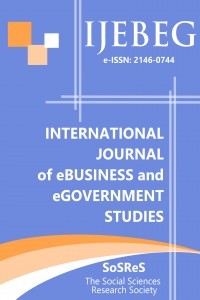PRAGMATIC USE OF ICT FOR EFFECTIVE DISASTER MANAGEMENT GOVERNANCE AND PARTICIPATION
PRAGMATIC USE OF ICT FOR EFFECTIVE DISASTER MANAGEMENT GOVERNANCE AND PARTICIPATION
In an archipelago situated in Southeast Asia, the Philippines with close proximity to the Pacific Ocean, is a typhoon and tropical cyclone-friendly country. While the citizens across the islands are very familiar with typhoon behaviors, anticipation of the probable disaster may still be underestimated and conventional preparation would not be enough. A disaster is a form of chaos that is very inimitable, unpredictable and pertains to real-time monitoring before, during and after it takes place. And ICT can take a strategic role as far as preparedness, response and rehabilitation efforts are to be made. This paper intends to impart two pragmatic ways of utilizing ICT in disaster governance. First is facilitating cooperation among the different government agencies through a web-based Disaster Coordination System to address disaster management. A comprehensive workflow facility that permits remote exchange of data and transactions among regional centers, local municipalities and the national disaster coordinating council is the major feature of the system. Second is applying concepts of human resources but at the same time addressing the peculiarities of a volunteer in the design of a volunteer management system for the Philippine National Red Cross. The system utilizes web and mobile technologies. Both systems are perceived to be proactive and dependable references for policy-making.
Keywords:
disaster management, disaster systems, disaster coordination, government cooperation, citizen participation Philippines,
___
- Aktan, Coskun Can (1993), “A Normative Analysis of Privatization: Which Public Goods Should
- Be Public/Private?” , DEU-IIBF, Dergisi, Cilt. 8 Sayi:1 Yil: 1993, pp. 124-138.
- Cruz, R.V., H. Harasawa, M. Lal, S. Wu, Y. Anokhin, B. Punsalmaa, Y. Honda, M. Jafari, C. Li and N. Huu Ninh, 2007: Asia. “Climate Change 2007: Impacts, Adaptation and Vulnerability.
- Contribution of Working Group II to the Fourth Assessment Report of the Intergovernmental Panel on Climate Change”, M.L. Parry, O.F. Canziani, J.P. Palutikof, P.J. van der Linden and C.E. Hanson, Eds., Cambridge University Press, Cambridge, UK, 469-506, pp. 473-474, p.476. Cuneta, John (2009), “Comparison of Typhoon Signals and Hurricane Categories”, http://laibcoms.asia/blog/laibeus/general2/comparison-of-typhoon-signals-and-hurricane- categories [ Accessed 28.12.2009]
- Cyganik, Kimberly A. (2003), "Disaster Preparedness in Virginia Hospital Center-Arlington after
- Sept 11, 2001" Disaster Management and Response 1(3): pp. 80-86. de Guzman, Emmanuel (2003), “Towards Total Disaster Risk Management Approach”,
- Proceedings of the Asian Conference on Disaster Reduction 2003, February 2003, pp. 1-17. http://www.adrc.asia/publications/Asian_Conference_2003/E)TDRM%20February%202003.pdf
- Morales, John Alliage (2009), Disaster Management, Graphic Magazine, 19 October 2009, Vol.20 No. 20. pp. 28-30.
- NDCC (2008), About NDCC, The National Disaster Coordinating Council Website, 2008, http://ndcc.gov.ph/home/index.php?option=com_content&task=view&id=12&Itemid=26 Accessed 12.12.2009]
- PNRC (2006), “About the Philippine National Red Cross”, The Philippine National Red Cross
- Webiste, 2006, http://www.redcross.org.ph/Site/PNRC/About.aspx [Accessed 12.12.2009]
- Pineda, Ma. Victoria, AlSherwin Ramos-Yeo, Johann Sy, Andrew Tan, and John Jefferson Uy, (2009), “The Philippine National Red Cross e-VAS System” (unpublished), presented and submitted 12 November, 2009, De La Salle University-Manila.
- The IMT (2005), In Defence of Marxism: Chaos Theory, 06 January 2005, http://www.marxist.com/science-old/chaostheory.html [Accessed 22.12.2009]
- Uy, Jocelyn (2008), PAGASA says typhoon had erratic movement, Philippine Daily Inquirer, 23 June 2008.
- Wikipedia, 2009, A Perfect Storm, Retrieved from http://en.wikipedia.org/wiki/Perfect_storm Accessed 22.12.2009]
- Wikipedia, 2009, Typhoon Xangsane, Retrieved from http://en.wikipedia.org/wiki/
- Typhoon_Xangsane [Accessed 22.12.2009] ENDNOTES
- DCS – Disaster Coordination System E-VAS/VMS –the E-VAS Volunteer Management System LGUs- Local government units NDCC – National Disaster Coordinating Council PAG-ASA - Philippine Atmospheric, Geological and Astronomical Services PNRC – Philippine National Red Cross RDCC – Regional Disaster Coordinating Council Surveillance agencies – refers to the government agencies responsible for reporting any disaster outbreak. Example: PAG-ASA, Department of Health, Philippine National Police
- Başlangıç: 2009
- Yayıncı: Sosyal Bilimler Araştırmaları Derneği
